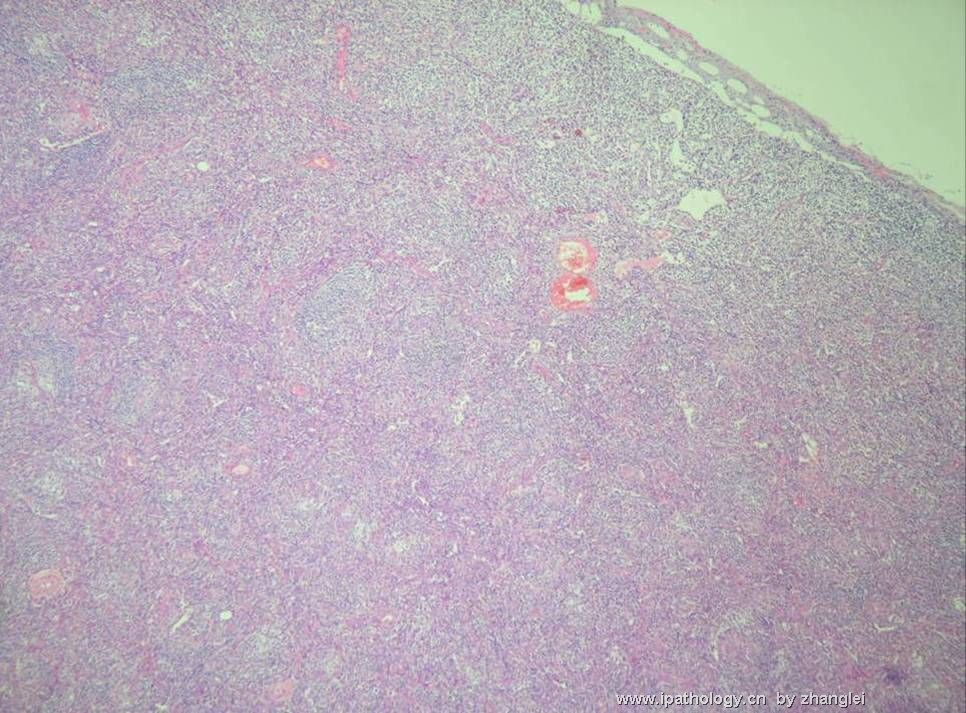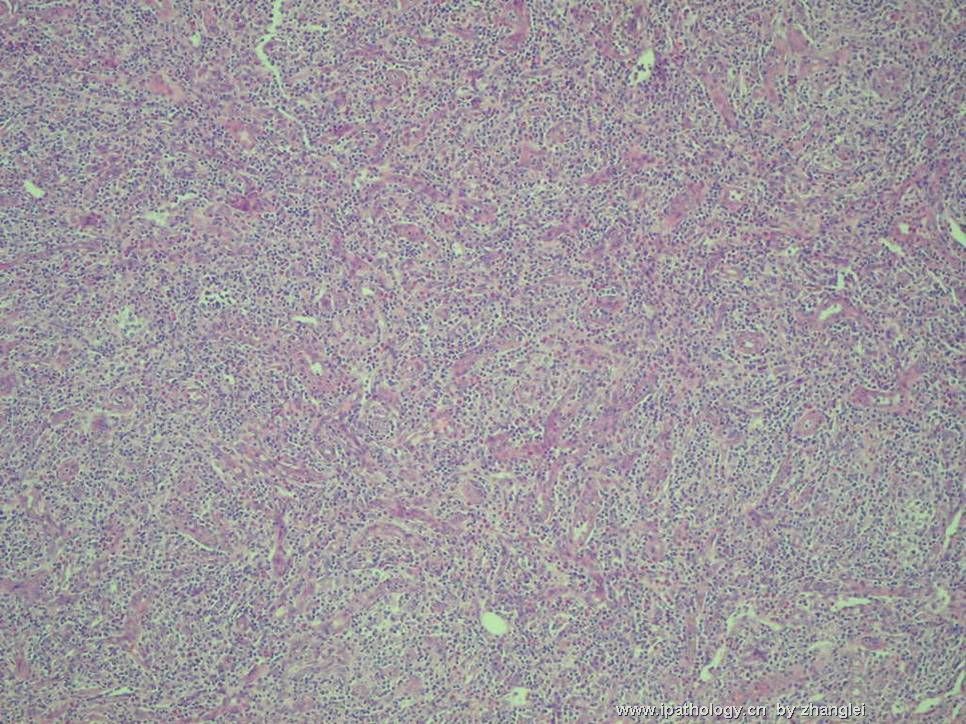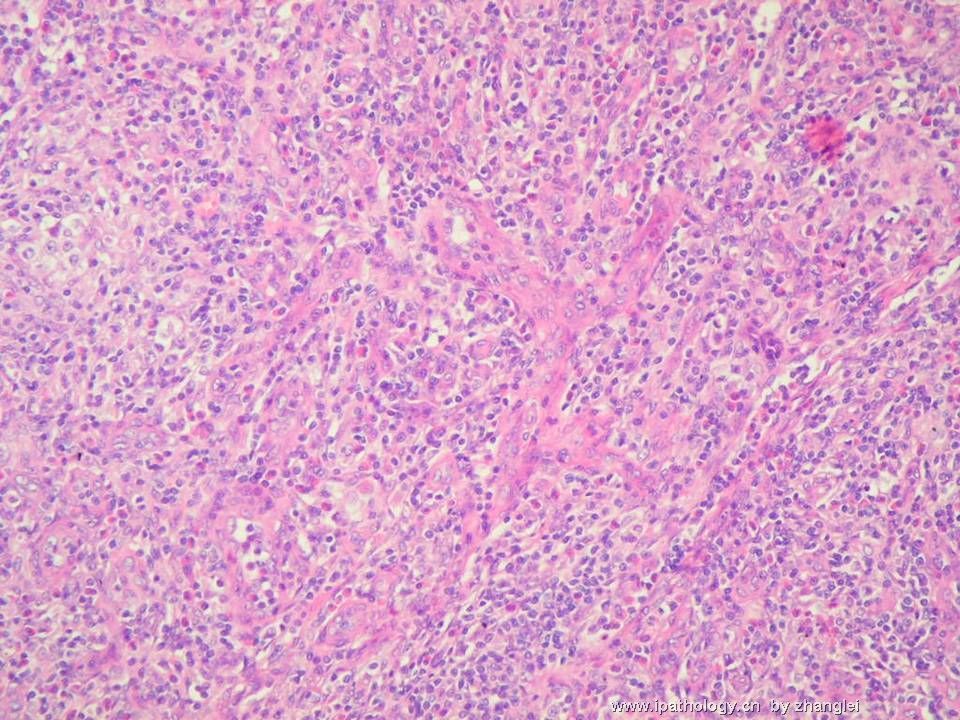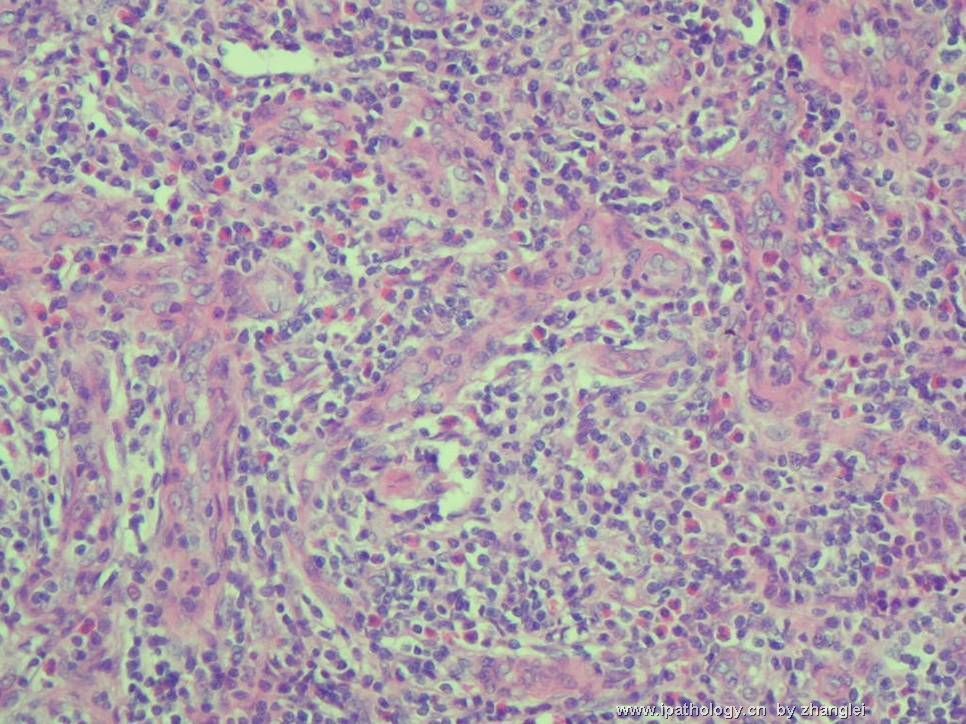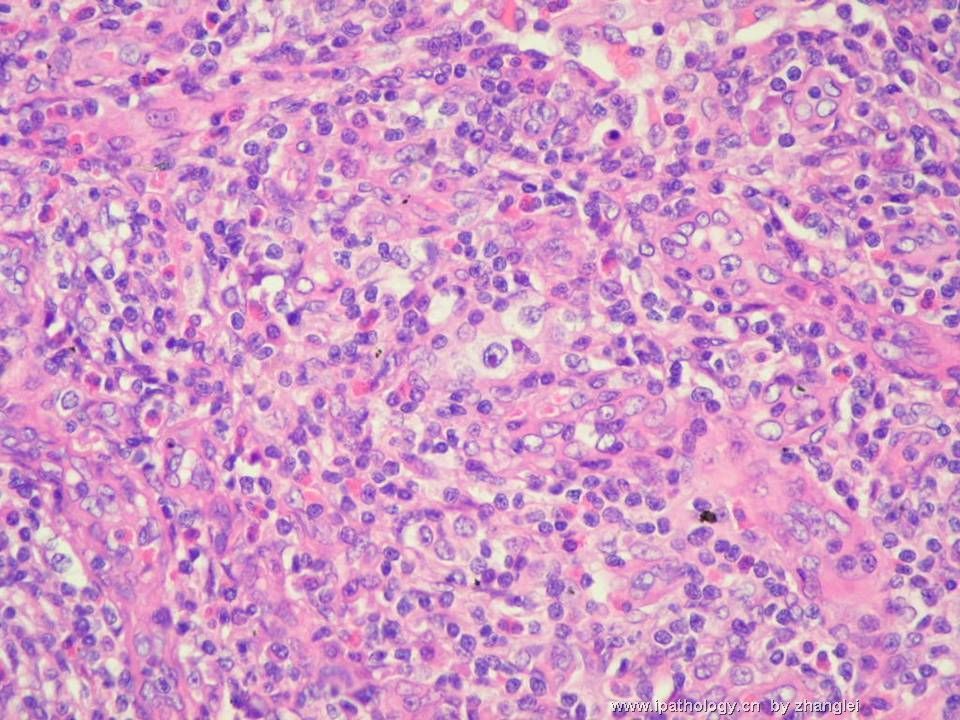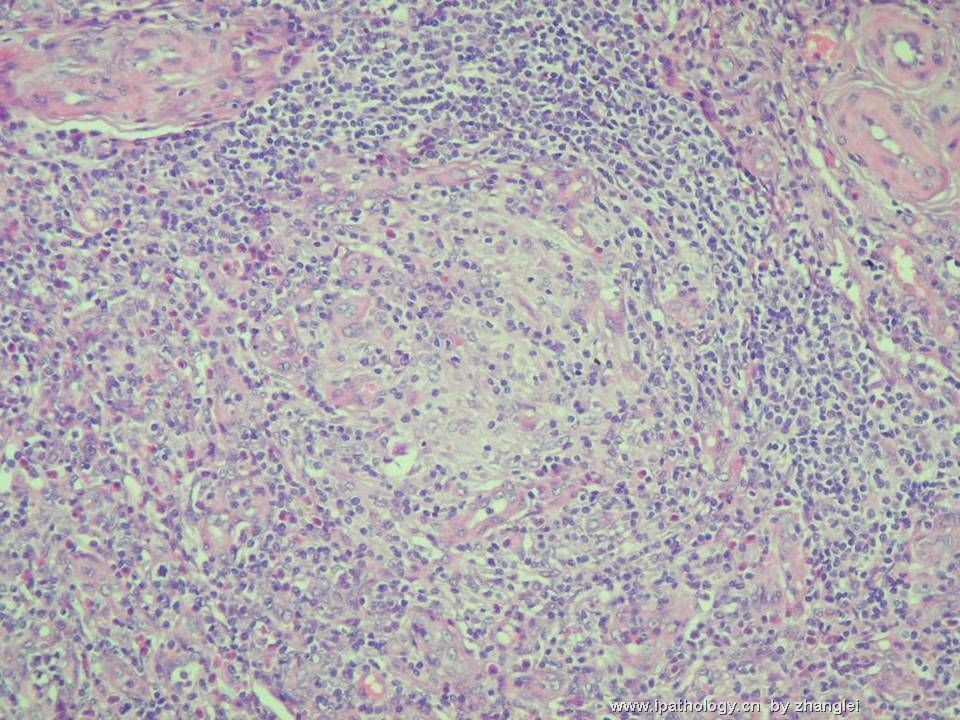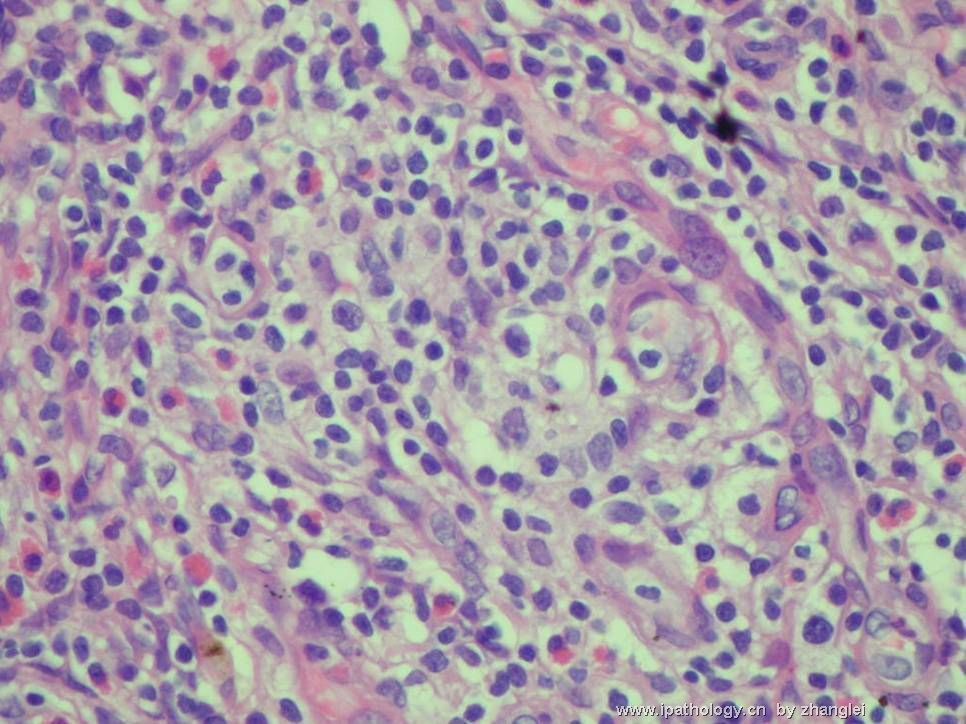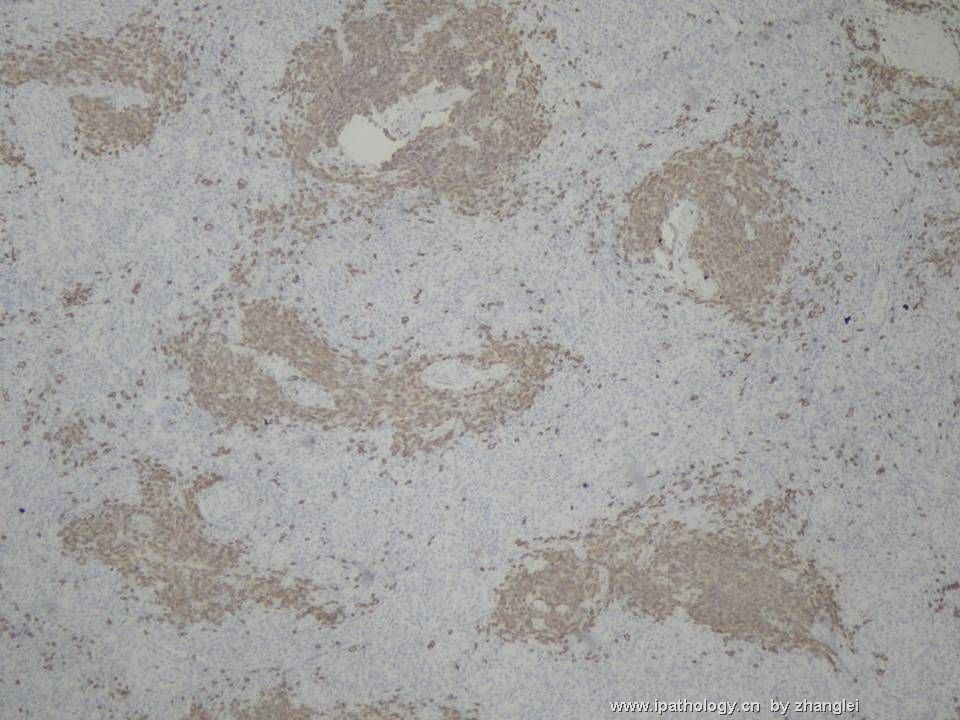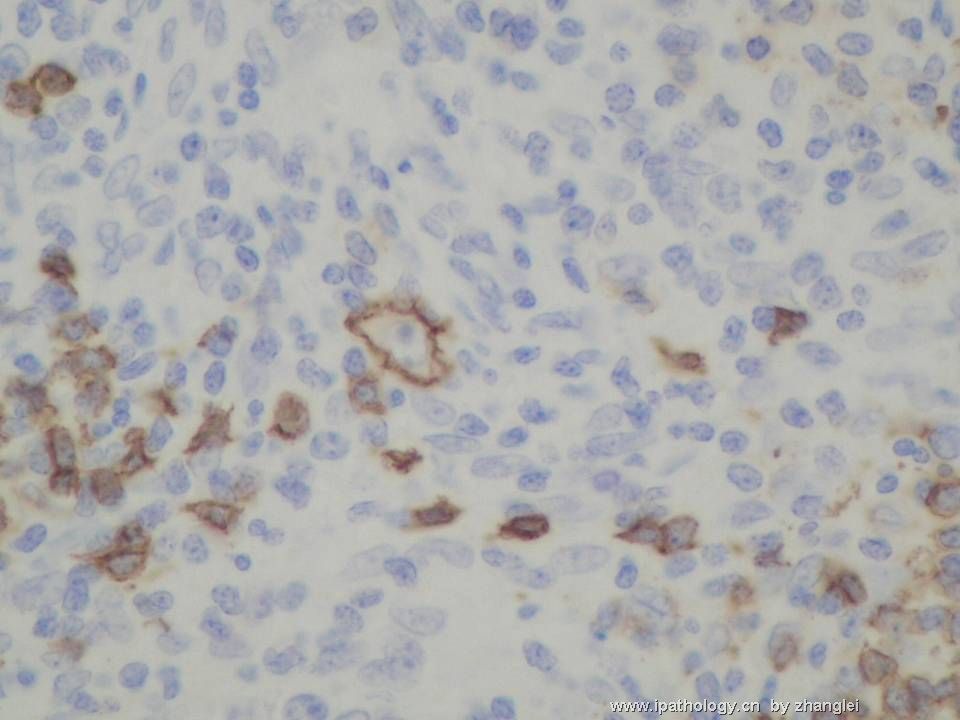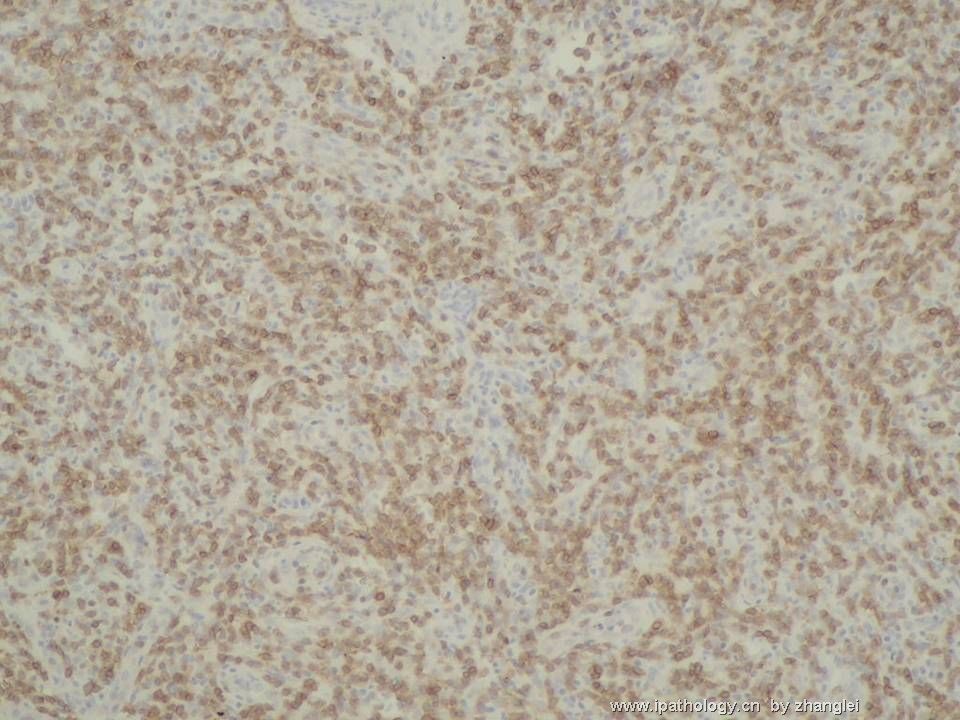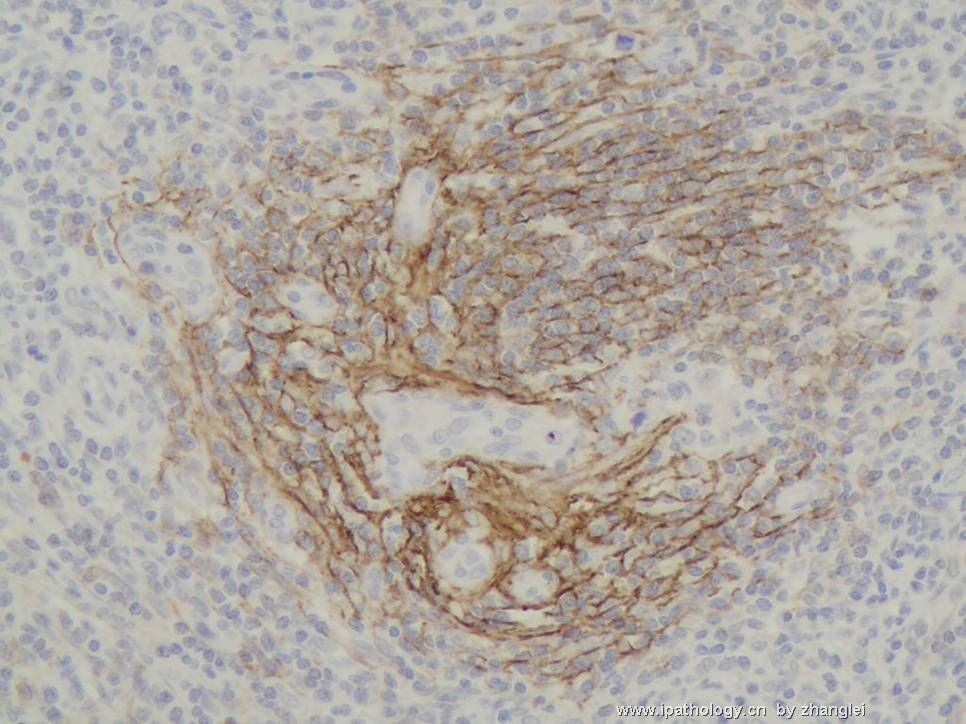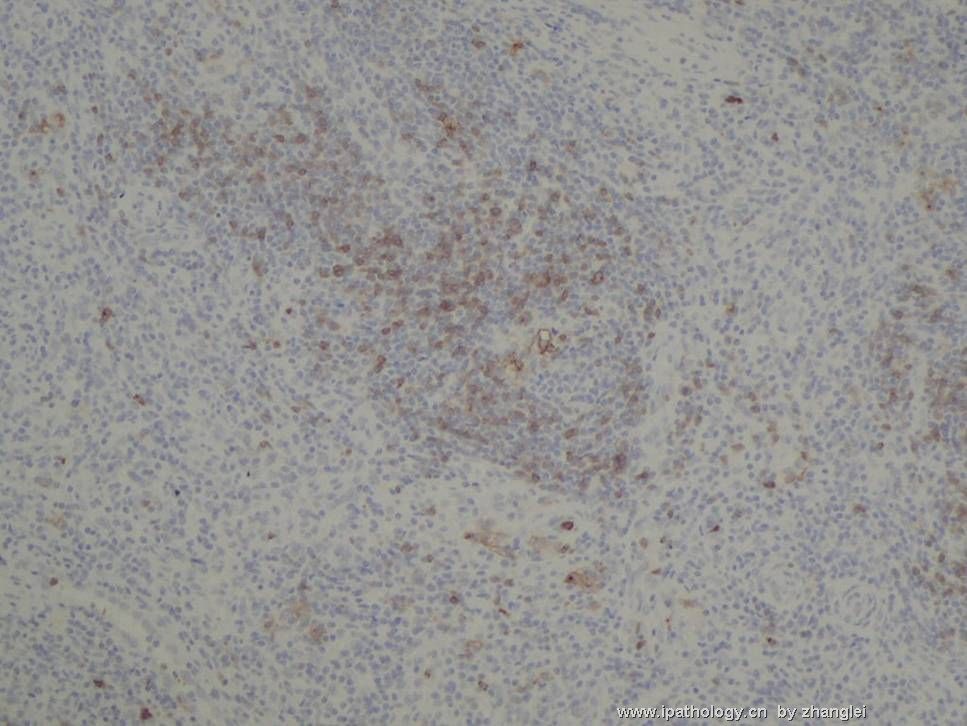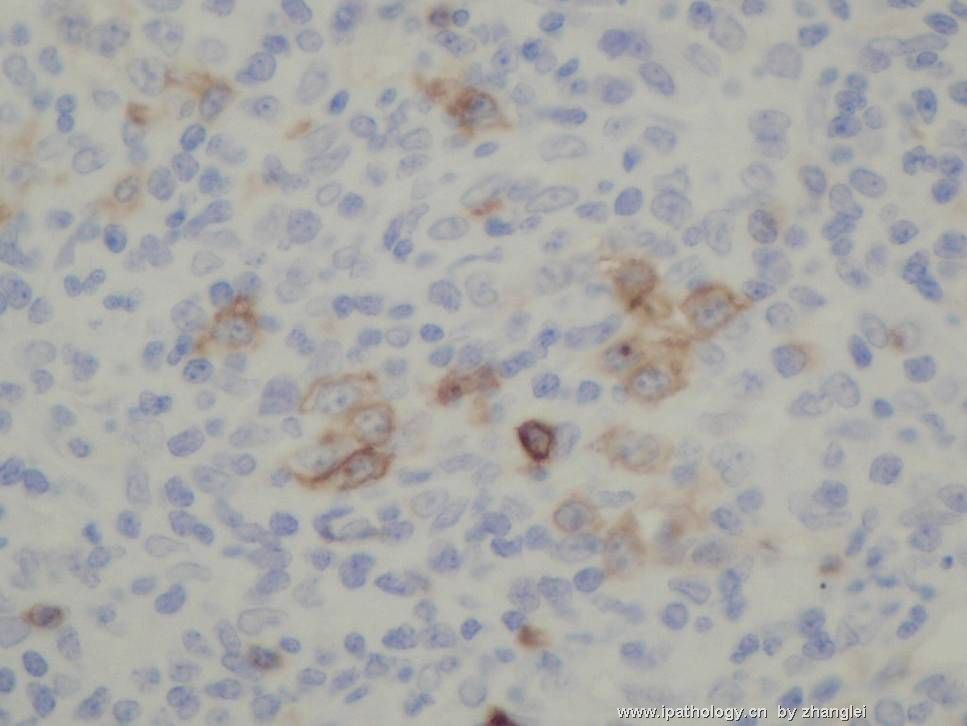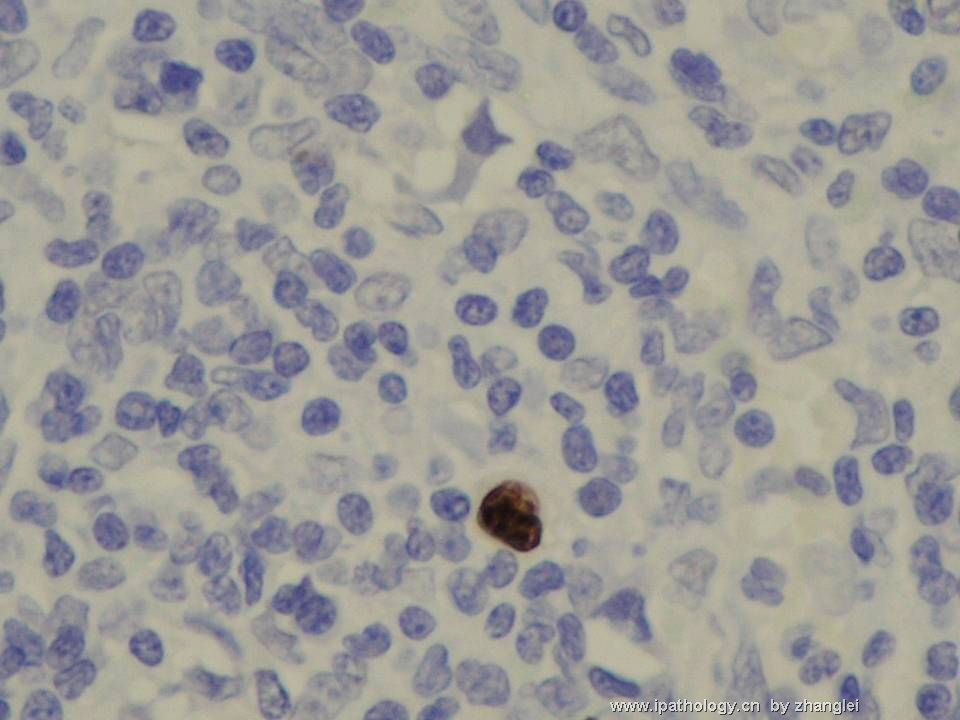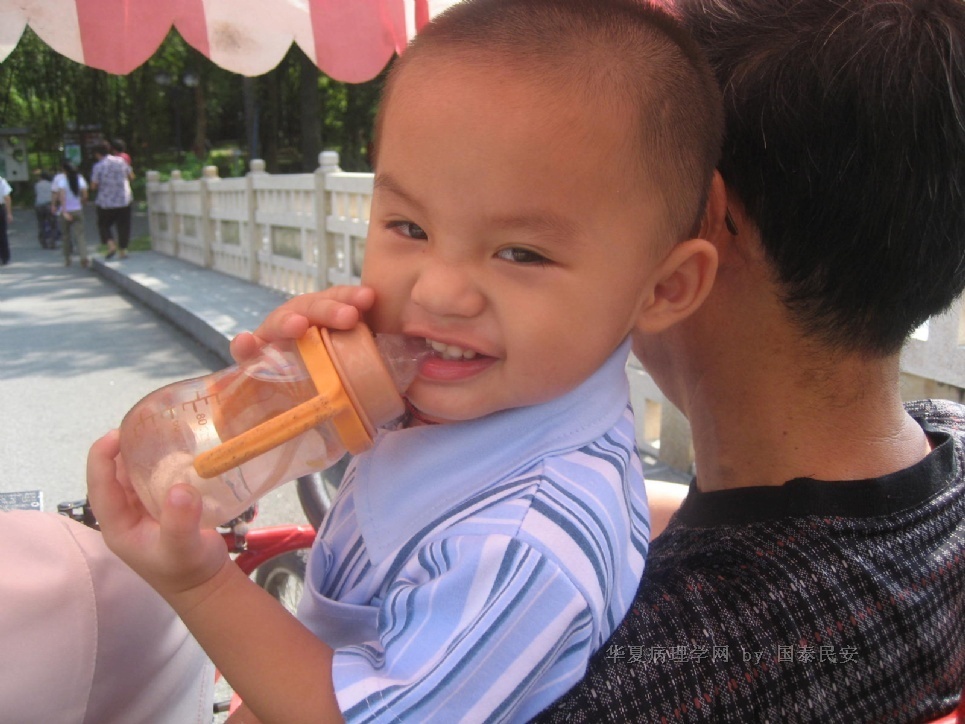|
Angioimmunoblastic T-cell lymphoma |
|
The Key Features |
-
Diffuse paracortical infiltrate of polymorphous neoplastic T cells
-
Prominent proliferation of high endothelial venules
-
Proliferation of follicular dendritic cells | |
|
CLINICAL FEATURES |
-
A peripheral T-cell lymphoma with a polymorphous infiltrate in lymph node, a prominent proliferation of high endothelial venules and follicular dendritic cells;
-
Age: middle to elderly; Gender: M=F;
-
15-20% of peripheral T-cell lymphoma, 1-2% of non-Hodgkin lymphoma;
-
Clinical presentations: often generalized peripheral lymphadenopathy, hepatosplenomegaly, frequent skin rash, and commonly bone marrow involvement upon biopsy. |
|
MICROSCOPIC FINDINGS |
- Loss of normal lymph node architecture
- Diffuse paracortical infiltrate of polymorphous neoplastic T cells
- Lymph node architecture is partially or totally effaced
- Lymphoid follicles, hyperplastic, depleted or regressed, with irregular borders and lack of mantle zones
- Neoplastic T cells
- Small to medium-sized but occasionally large cells, usually show minimal cytologic atypia
- Abundant clear to pale cytoplasm, distinct cell membranes and irregular nuclear contour
- Often in clusters around high endothelial venules
- Often obscured by reactive lymphocytes, immunoblasts, plasma cells, histiocytes, and eosinophils
- Prominent proliferation high endothelial venules
- Prominent arborizing high endothelial venules with PAS positive amorphous perivascular material
- The nuclei of endothelial cells are round to oval with regular nuclear contour and a small central nucleolus
- Prominent proliferation of follicular dendritic cells
- Follicular dendritic cell proliferation outside germinal centers/around high endothelial venules
- Highlighted by CD21 staining
- B cell proliferation
- >70% are EBV positive
- May be polymorphic or monomorphic, immunoblastic or plasmacytic
- Immunoglobulin gene rearrangement detected in 10% cases
- May produce a Hodgkin-like proliferation with Reed-Sternberg-like cells
|
|
|
|
|
|
DIFFERENTIAL DIAGNOSES |
-
Reactive lymphadenopathies
-
Multicentric Castleman's disease
-
Diffuse large B-cell lymphoma
-
Classical Hodgkin's Disease |
|
IMMUNOHISTOCHEMISTRY AND SPECIAL STAINS |
-
Neoplastic cells are mature T-cells with CD3+, CD4+
-
In most cases, the neoplastic T-cells show aberrant expression of CD10
-
Loss of T-cell antigen such as CD7 can occur in some cases
-
EBV positive in >75% cases, mostly in B-cells, not T-cells
-
Follicular dendritic cells CD21+ |
| CYTOGENETICS |
-
•TCR gene rearrangement in 75% cases
- 90% have cytogenetic alterations: trisomy 3, trisomy 5 and gain of chromosome X
|
|
TREATMENT AND PROGNOSIS |
|
|
|
REFERENCES |
-
Jaffe ES, Harris NL, Stein H, Vardiman JW, editors. Pathology and genetics of tumours of haematopoietic and lymphoid tissues. World Health Organization classification of tumours. Lyon (France): IARC Press; 2001.
- Practical Diagnosis of Hematologic Disorders, Fourth Edition. By Carl R. Kjeldsberg, 2006.
|
Summarized by Zenggang Pan, MD, PhD
